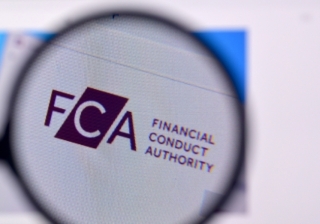'Communication beats perfection': Roz Cawood, StreamBank
We spoke to StreamBank’s managing director of property finance, Roz Cawood, to unpack what really makes a difference when submitting a bridging case and how brokers can give underwriters everything they need to say ‘yes’.

FR: What’s the single biggest factor in getting a bridging deal approved quickly?
It’s about completeness from the outset. The fastest approvals almost always come from brokers who’ve packaged the case thoroughly and not just the numbers, but the story behind them. Underwriters are decision-makers, not data chasers, so if the application clearly outlines the borrower’s background, the property’s purpose, and the exit strategy, the process becomes far more efficient. Missing information is one of the biggest causes of delay.
FR: What do you mean by “the story” of a case?
Every property tells a story. In bridging, the asset often carries as much weight as the applicant. A well-presented rationale, so, why this property, why now, and how the exit works helps the underwriter see the logic behind the deal. We recently completed a StreamLine case for a broker who did this brilliantly. The property was a mixed-use asset with some quirks, but the broker flagged potential valuation challenges early and provided a clear resale strategy. Because the submission was transparent and well-organised, our underwriters turned it around in record time.
FR: How important is communication between brokers and underwriters?
It’s everything. I always say that communication beats perfection. A quick phone call or short, focused email can save days because too often, silence creates bottlenecks. Bridging is time-sensitive by nature, so regular updates, even if just to confirm progress, keep everyone aligned and confident in the process.
FR: What kind of detail do underwriters want to see upfront?
As much as possible. Have everything on the table early from valuation details, borrower profile, project timelines, any title or planning nuances. And if there’s a potential issue, flag it. Underwriters don’t expect every case to be flawless; they just want honesty. It’s far easier to find solutions when challenges are disclosed early rather than discovered later.
FR: Exit strategies seem to come up again and again in underwriting discussions. Why?
Because they’re the cornerstone of bridging confidence. Whether it’s a sale, refinance, or development exit, underwriters need to see that it’s realistic and well-costed. Supporting evidence like comparable sales or rental demand data goes a long way because it shows you’ve thought about the market, not just the mechanics.
FR: How can brokers use technology better without losing the personal touch?
Digital processes are fantastic for speed. We've seen big gains thanks to title insurance and digital pack uploads, but technology doesn’t replace relationships. The best brokers use technology for efficiency and combine it with human insight. For example, add a cover note that provides colour and context as that personal layer often makes the difference between a routine submission and a standout one.
FR: What sets great broker-underwriter relationships apart?
Trust and consistency as the most successful brokers treat underwriters as part of their team. They understand each lender’s ‘sweet spot’ and adapt their submissions accordingly. At StreamBank, our underwriters work closely with brokers to shape cases for approval and that collaboration is what turns a complex deal into a completion.
FR: Finally, what’s your golden rule for brokers packaging bridging cases?
Think like an underwriter. Ask yourself: would I lend my own money on this? If the answer’s yes and you can show why, you’re halfway there. Clear rationale, honest disclosure, and responsive communication remain the three most powerful tools any broker has and when those elements come together, everything else falls into place.

Breaking news
Direct to your inbox:
More
stories
you'll love:
This week's biggest stories:
Budget
Budget: Government introduces mansion tax on high-value homes

Budget
Budget: Government introduces £2,000 salary sacrifice cap

Lifetime Isa
Budget: Lifetime ISA to be scrapped in favour of new first-time buyer ISA

Budget
Budget: Property income tax to rise by 2%

FCA
Firms required to report complaints involving vulnerable customers under simplified FCA rules

Santander
Santander joins mortgage price war with new rates from 3.51%
